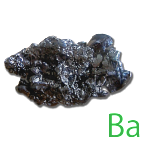LES has developed an innovative approach to extend the life of recycled frac water utilizing the ENVIRO-SHALE PROCESS (ESP). This patented process purifies the frac water by removing various impurities (inorganic and organic) thereby extending its effectiveness as a water source for hydraulic fracturing. LES’ proprietary treated granular activated carbon adsorbs organic compounds while simultaneously recovering barium, strontium and calciuim along with salt as marketable by-product. The ESP Process is a superior treatment process offering several unique features and benefits:
- its economical to operate -significantly reduces the need to dispose of large volumes of frac water via deep well injection;
- mobile – it can be operated in the field for “real time” recycling; and (3) it produces reusable water – it can be recycled for additional fracing and reduce fresh water needs. LES’ unit can process water slated for disposal at a deep well injection facility and recycle it back to a nearby drilling operation.



Case Study
The study evaluated the treatability of a Marcellus Shale hydraulic fracturing “flowback” water sample. The sample contained a matrix of organic and inorganic contaminants with a high concentration of chlorides. The sample was collected from an ongoing drilling operation located in south-eastern Ohio.
The ENVIRO-SHALE PROCESS (Patented) was able to produce a purified frac flowback effluent suitable for evaporative brine recovery. The system’s effluent average for total chlorides and total dissolved solids concentrations were 71,422 mg/l and 121,948 mg/l respectively. This was an average removal % for total chlorides of 20.02% and total dissolved solids of 27.41%. The activated carbon removal efficiency for oil/grease and total iron was 98.7% and 99.93% respectively. The effluent from the carbon system was water white and crystal clear. A summary of the process results are presented in Table 1.0. The effluent was evaporated and a brine product was recovered. The final distillate total chloride concentration and conductivity was 195 mg/l and 650 µS/cm respectively. This resulted in a reduction of the total chloride concentration and conductivity in the final distillate sample of 99.75% and 99.71% respectively. X-Ray Diffraction analysis revealed the brine product consisted of approximately 72.5% sodium chloride (Halite) (dry wt. basis) as its major constituent. Attached are photographs of the treated samples and the x-ray diffraction analysis.
| No. | Item | Raw Feed | ESP Effluent | Final Distillate | % Removed |
|---|---|---|---|---|---|
| 1 | Conductivity (µS/cm) | 220,000 | 161,150 | 650 | 99.71% |
| 2 | pH | 5.63 | 6.42 | 6.82 | |
| 3 | Total Iron (mg/l) | 143 | <0.1 | <0.1 | 99.93% |
| 4 | Total Chlorides (mg/l) | 78,000 | 62,384 | 195 | 99.75% |
| 5 | Oil & Grease (mg/l) | 77.0 | <5 | <5 | 98.70% |
| 6 | Total Organic Carbon (mg/l) | 62.76 | 0.61 | <.1 | 99.84% |
Based on the study’s results, a treatment plant was designed to process a waste stream containing oil/grease, soluble organics, high levels of chlorides and a complex matrix of inorganic constituents. The plant design utilizes evaporative brine recovery. The brine will be sold as a by-product and the high quality effluent will be suitable for recycling at new drill sites or direct discharge into the river. The projected treatment throughput is 210,000 GPD. The plant operating schedule is 24 hours per day for seven (7) days per week The gas driller’s planned treatment plant has the potential to generate a positive cash flow. This operation has three revenue sources: (1) treatment tipping fee. (2) water sales and (3) recovered brine product. Revenues are estimated at $13,000,000 – $17,000,000 per year. This would yield a capital equipment payback period of less than six months!
Back to Services

